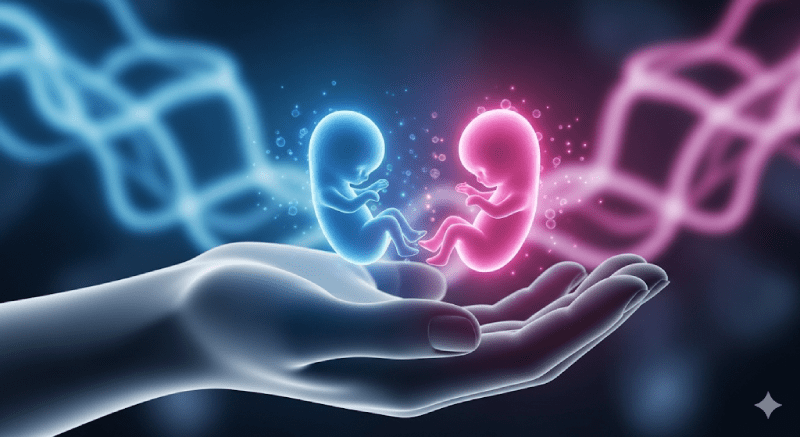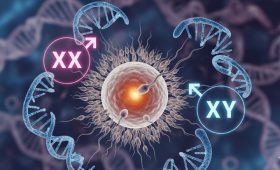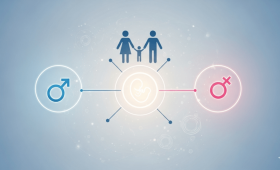What Is In Vitro Fertilization (IVF) and How Is It Done?
In Vitro Fertilization (IVF) is an assisted reproductive technology in which a woman’s eggs are fertilized with a man’s sperm in a laboratory setting, outside the body. This process typically provides a solution for couples who are unable to conceive naturally.
The treatment involves several stages: stimulating the ovaries, retrieving the eggs, preparing the sperm sample, fertilization, and finally, transferring the resulting healthy embryos into the expectant mother’s uterus. This method can also be used for special purposes, such as preventing genetic diseases or determining the baby’s gender.
Is Gender Selection Possible with IVF?
Yes, gender selection is scientifically possible with the IVF method, but it is only performed using a special technique called Preimplantation Genetic Testing (PGT). In this procedure, the genetic structure of the embryos fertilized in the laboratory is examined, and the sex chromosomes (X and Y) are identified. Only the embryos with the desired gender and that are also found to be genetically healthy are transferred to the expectant mother’s uterus. This method is of vital importance, especially in cases where a genetic disease is linked to a specific gender.
In What Situations Is Gender Selection Performed?
Gender selection is generally performed when there is a gender-linked hereditary disease in the family. For example, parents who are carriers of genetic diseases such as hemophilia or muscular dystrophy, which only affect male children, may opt for gender selection to prevent the transmission of these diseases. In some countries, gender selection is legally permitted for family balancing purposes (if the family already has several children of one gender). This method aims to protect the individual’s genetic health.
What Is the Preimplantation Genetic Testing (PGT) Method?
Preimplantation Genetic Testing (PGT) is a genetic testing method used during IVF treatment. Before the embryo is transferred to the mother’s uterus, a few cells are taken as a sample, and their genetic structure is examined. This makes it possible to determine whether the embryo has chromosomal abnormalities (such as Down syndrome) or single-gene diseases. It has subtypes such as PGT-M (for monogenic diseases) and PGT-A (for aneuploidy screening). The PGT-A method is used for gender selection. This test allows for the transfer of only genetically healthy embryos of the desired gender.
Is Gender Selection Legal?
The legality of gender selection varies from country to country. In Turkey and many European countries, gender selection is not legal without a medical necessity (such as preventing the transmission of gender-linked genetic diseases). However, in some countries, particularly in North America and some Asian countries, gender selection is legally permitted for family balancing purposes. Therefore, couples considering this type of treatment must first thoroughly research the laws and regulations of the relevant country.
How Long Does IVF Treatment Take?
The IVF treatment process varies from person to person but generally takes between 2 to 4 weeks. The process begins with stimulating the ovaries with medication, which can take about 10-14 days. After the eggs have reached a sufficient size, the egg retrieval procedure is performed. Subsequently, a few days are waited for fertilization and embryo development in the laboratory. Finally, the embryo transfer is carried out at the most suitable time. All these stages determine the overall duration of the treatment.
How Is Embryo Development Monitored?
The development of embryos created in the laboratory is closely monitored under a microscope. The embryos are expected to divide and grow healthily and reach a sufficient number of cells for genetic testing. Embryologists evaluate the morphological features (shape, size, cell division rate) of each embryo and use this data to determine the healthiest and most suitable embryos for transfer. Development is monitored until the blastocyst stage.
What Is the Success Rate of IVF Treatment?
The success rate of IVF treatment varies depending on many factors. The most important factors include the expectant mother’s age, egg quality, sperm quality, and the number of embryos used. While success rates are higher in women under 35, these rates may decrease with age. In general, the success rate in a single IVF cycle can vary between 30% and 60%. Transferring a healthy embryo with genetic screening (PGT) increases the success rate.
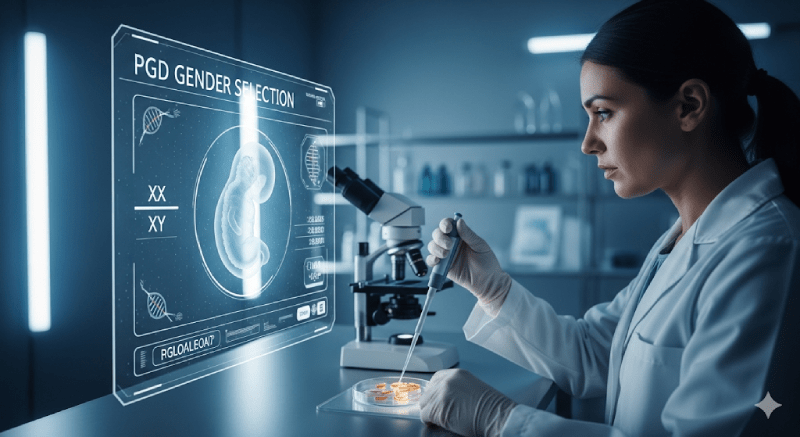
What Are the Ethical Aspects of Gender Selection?
Gender selection is a topic that leads to ethical debates in many countries. These debates are generally based on the concern that gender selection performed without a medical necessity could lead to treating babies as consumer goods. It is also thought that it could cause a gender imbalance in society and lead to inequality between genders. Therefore, many countries legally accept this method only in cases of medical necessity.
What Tests Are Done Before Starting Treatment?
Before starting IVF treatment, a comprehensive evaluation is performed for both the man and the woman. For the woman, an AMH (Anti-Müllerian Hormone) test and an ultrasound examination are performed to determine ovarian reserve. In addition, a hysteroscopy (HSG) is taken to examine the condition of the uterus and fallopian tubes. For the man, a semen analysis is performed. These tests are necessary to determine the most suitable protocol for treatment and to increase the chance of success.
What Are the Risks of the PGT Method?
The PGT method is an invasive procedure that involves taking cells from the embryo. The risk of potential damage to the embryo during this procedure is very low, but it still exists. Additionally, there is a small chance of false positive or false negative results. Therefore, the potential risks and benefits should be carefully evaluated when making the decision for PGT. For the most accurate information, expert support should be sought.
What Should My Partner’s Role Be During the Treatment Process?
The treatment process can be physically and emotionally challenging for both the man and the woman. The partner’s support is of great importance during this process. Your partner should understand the treatment program, accompany you to appointments, and provide emotional support. Overcoming this process with a joint effort will strengthen your relationship. Planning this journey together reduces stress and increases motivation.
How Is the Egg Retrieval Procedure Performed?
Egg retrieval is a procedure that takes about 15-20 minutes and is performed under light anesthesia. With the guidance of an ultrasound, eggs are collected from the follicles in the ovaries with the help of a thin needle. Mild cramps or bloating may be felt after the procedure, but these symptoms usually pass within a few hours. This procedure is one of the most important stages of the treatment.
Is Embryo Transfer Painful?
Embryo transfer is one of the most painless and exciting stages of IVF treatment. In this procedure, which does not require anesthesia, the embryos are placed into the expectant mother’s uterus with the help of a thin catheter under ultrasound guidance. This procedure usually takes a few minutes and is a comfortable experience for most women. The expectant mother is advised to rest for a while after the procedure.
How Should Nutrition Be During Treatment?
A healthy and balanced diet during IVF treatment can help increase the chance of success. It is important to avoid processed foods, excessive sugar, and caffeine. A diet rich in fresh fruits, vegetables, whole grains, healthy fats, and protein is recommended. This type of nutrition allows the body to respond better to the treatment.
Can I Exercise During the Treatment Process?
It is important to avoid heavy exercise during IVF treatment. Strenuous exercises can stimulate the ovaries and negatively affect the treatment process. Instead, light and relaxing activities such as walking, yoga, or swimming can be preferred. Exercise helps reduce stress and increase blood flow.
Is Gender Selection Treatment Expensive?
Gender selection treatment is generally more expensive than standard IVF treatment. This is due to the additional cost of genetic testing (PGT). The total cost of the treatment varies depending on the procedures to be applied, the medications used, and the clinic.
How Is Gender Selection Done Abroad?
For gender selection abroad, it is first necessary to research the laws of the relevant country and the regulations of the clinics in that country. The treatment process is generally organized through international patient consultants. Couples may have to travel for all stages of the treatment. In this process, logistical planning such as accommodation and transportation is also important. You can get information about such organizations by contacting companies like Cure Holiday.
What Should Be Paid Attention to in the Preparation Process for Treatment?
Before starting treatment, it is important to stay away from harmful habits such as smoking and alcohol, reach a healthy weight, and exercise regularly. Additionally, staying away from stress and preparing yourself psychologically also increases the chance of success. In this process, it is very important for couples to support each other.
In Which Countries Is Gender Selection Legal?
Legal regulations for gender selection vary in each country. For example, in some countries like the United States, Mexico, Cyprus, and Thailand, gender selection for family balancing or preference is allowed. However, in countries like Germany, the UK, and Turkey, this method is generally applied only in cases of medical necessity. This is subject to laws and medical ethics rules.
What Are the Reasons for Failure in IVF Treatment?
There can be many reasons for failure in IVF treatment. The most common among them are the embryo not being genetically healthy, the uterine environment not being suitable for the embryo to implant, and poor egg or sperm quality. In addition, hormonal problems or issues related to the immune system can also lead to failure. In case of failure, it is important to create a new treatment plan.
When Do Pregnancy Symptoms Start?
After embryo transfer, pregnancy symptoms generally begin within 1-2 weeks after the transfer. The earliest signs include light spotting (implantation bleeding), breast tenderness, and fatigue. However, these symptoms vary from person to person, and some women may not feel any symptoms at all. For a definitive result, a blood pregnancy test should be done 12 days after the transfer.
Does the PGT Method Harm the Baby?
PGT is considered a safe method that does not pose a risk to the baby. The cells taken from the embryo in this procedure are cells that will not continue to develop and do not harm the embryo. Additionally, this method reduces the risk of miscarriage and genetic diseases by eliminating genetically unhealthy embryos.
How Is the Use of Frozen Embryos?
In IVF treatment, healthy and good-quality embryos that remain after the transfer can be frozen for use in future treatments. These embryos are frozen and stored in a special fluid. For the next pregnancy attempt, the frozen embryos are thawed and transferred to the expectant mother’s uterus. This method eliminates the need for a new egg retrieval procedure for each treatment.
What Are the Psychological Effects of Gender Selection?
Gender selection treatment can create both hope and stress for couples. The uncertainty of the treatment, high costs, and legal limitations can create psychological pressure. It is important for couples to manage this process together and support each other. Seeking psychological support can help overcome emotional difficulties. Getting through this process together will strengthen your relationship.
Is Rest Important After Treatment?
Short-term rest is recommended after embryo transfer, but bed rest has not been scientifically proven to provide a benefit. Continuing with light daily activities can help reduce stress and increase blood circulation. It is important to avoid heavy lifting and strenuous exercise during this period.
Is There a Risk of Multiple Pregnancy?
The risk of multiple pregnancy in IVF treatment depends on the number of embryos transferred. Today, a single embryo transfer is generally preferred. This is considered the safest approach for the health of both the mother and the babies. Multiple pregnancies bring risks such as premature birth and low birth weight.
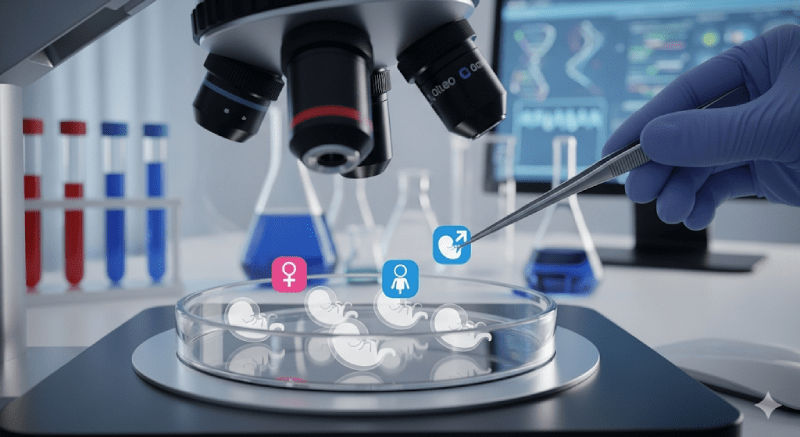
What Is the Importance of Age in IVF Treatment?
Age is the most important factor affecting the success of IVF treatment. Especially for women, egg quality and quantity begin to decrease after the age of 35. This reduces the chance of fertilization and obtaining a healthy embryo. Therefore, it is recommended that couples consult with a professional at an early age without waiting too long for IVF treatment.
How Is Sperm Selection Done?
In IVF treatment, the healthiest and most motile sperm are selected using special techniques. The sperm sample is washed in the laboratory, and the highest quality sperm are separated. In the ICSI (Intracytoplasmic Sperm Injection) method, a single healthy sperm cell is directly injected into an egg. This method increases the chance of success in cases of male infertility.
Is Hormone Supplementation Necessary During Treatment?
Yes, hormone supplements are necessary during IVF treatment. Various hormone medications are used to stimulate the ovaries, ensure the eggs mature, and prepare the uterine lining for embryo transfer. These medications are generally given in the form of injections or tablets.
How to Manage Stress During Treatment?
IVF treatment can be a stressful process for couples. To manage stress, relaxing activities such as regular exercise, meditation, or yoga can be done. Sharing emotions with a partner or a support group is also beneficial. Since high stress can negatively affect the treatment, seeking psychological support is important.
What Diseases Does the PGT Method Detect?
PGT can detect many genetic diseases. These include single-gene diseases such as cystic fibrosis, thalassemia, sickle cell anemia, and Huntington’s disease. It can also detect chromosomal abnormalities such as Down syndrome. This method plays a vital role in preventing the transmission of known genetic diseases in the family to new generations.
What Are the Risks of Unlawful Methods?
Unlawful or unscientific gender selection methods can carry serious risks. These methods are generally unsuccessful and can cause couples to lose time, money, and emotional effort. In addition, some illegal clinics or methods may not comply with hygiene and medical standards, endangering the health of the mother and the baby. Therefore, it is important to only apply to legal and licensed centers.
Where to Apply for Gender Selection Treatment?
For gender selection treatment, you should first apply to an IVF center or clinic that legally offers this service and has experience in Preimplantation Genetic Testing (PGT). Those considering treatment abroad can get support from international health tourism consultancy firms like Cure Holiday.
Is Travel Possible During the Treatment Process?
Travel during IVF treatment may be possible depending on certain stages of the treatment. There may be travel restrictions before and after procedures such as egg retrieval and embryo transfer. In general, it is recommended to avoid long flights and travel that requires excessive physical exertion during the treatment process. It is best to discuss this with the expert who is planning your treatment.
